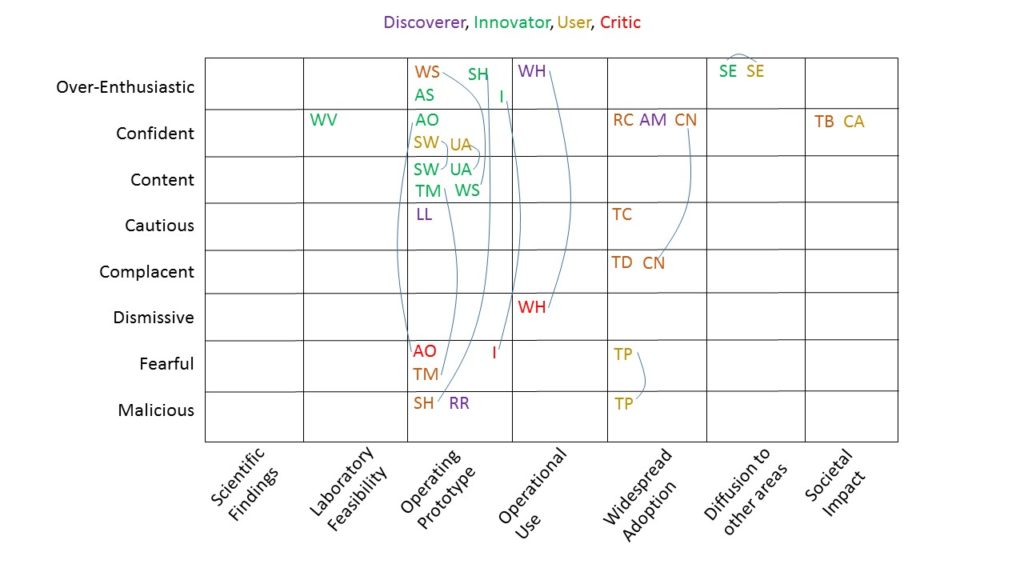Most of my fiction involves characters struggling with new technology. These days, learning how to contend with technology is a relevant and fascinating problem for all of us, and I enjoy exploring it.
I wondered if I was roaming the full realm of that topic, so I decided to map it. There are several ways to do this, but I chose to create one axis showing technology development stages, and another describing the spectrum of character responses to technology. Then I figured I’d plot my published stories on that map, and color-code the roles my characters played.
If I’d done my job well, I thought, the map would show a good dispersal of scattered points. That is, I’d have written stories covering all the areas, leaving no bare spots.
Without further preamble, here’s the map:

To make it, I chose the stages of technological development posited by the technology forecaster Joseph P. Martino. These are:
1. Scientific findings: The innovator has a basic scientific understanding of some phenomenon.
2. Laboratory feasibility: The innovator identified a technical solution to a specific problem and created a laboratory model.
3. Operating prototype: The innovator built a device intended for a particular operational environment.
4. Operational use or commercial introduction: The innovation is technologically successful and economically feasible.
5. Widespread adoption: The innovation proves superior to predecessor technologies and begins to replace them.
6. Diffusion to other areas: Users adopt the innovation for purposes other than those originally intended.
7. Social and economic impact: The innovation changed the behavior of society or has somehow involved a substantial portion of the economy.
I then came up with typical responses to technology along a positive-to-negative spectrum: Over-Enthusiastic, Confident, Content, Cautious, Complacent, Dismissive, Fearful, and Malicious.
I grouped my characters into four roles: Discoverer, Innovator, User, and Critic. Some of my stories involve people discovering lost technologies or tech developed by departed aliens, so I had to include that role. The other roles should be obvious.
The resulting map shows many of my published stories, indicated by two-letter abbreviations of their titles. Where a single story occupied two areas, I connected them with a line.
Details of the map aren’t important, but you can tell a couple of things at a glance. First, I’m nowhere close to covering the whole map. I’ve concentrated on the Operating Prototype and Widespread Adoption stages more than the others.
Second, innovators view technologies positively and critics negatively (duh), while users tend to view technology negatively in the early stages and more positively in the later ones.
As far as map coverage goes, I wonder if the Operating Prototype and Widespread Adoption stages provide more opportunity for dramatic stories than the other stages.
Has anybody studied technology in fiction using a similar method? I can imagine a map with hundreds of colored points on it, representing an analysis of hundreds of science fiction stories. It would be fun to see how my stories stack up against those of other authors.
In the meantime, I’ll continue to write. As more of my stories get published, perhaps you’ll see future versions of this map, updated by—
Poseidon’s Scribe
